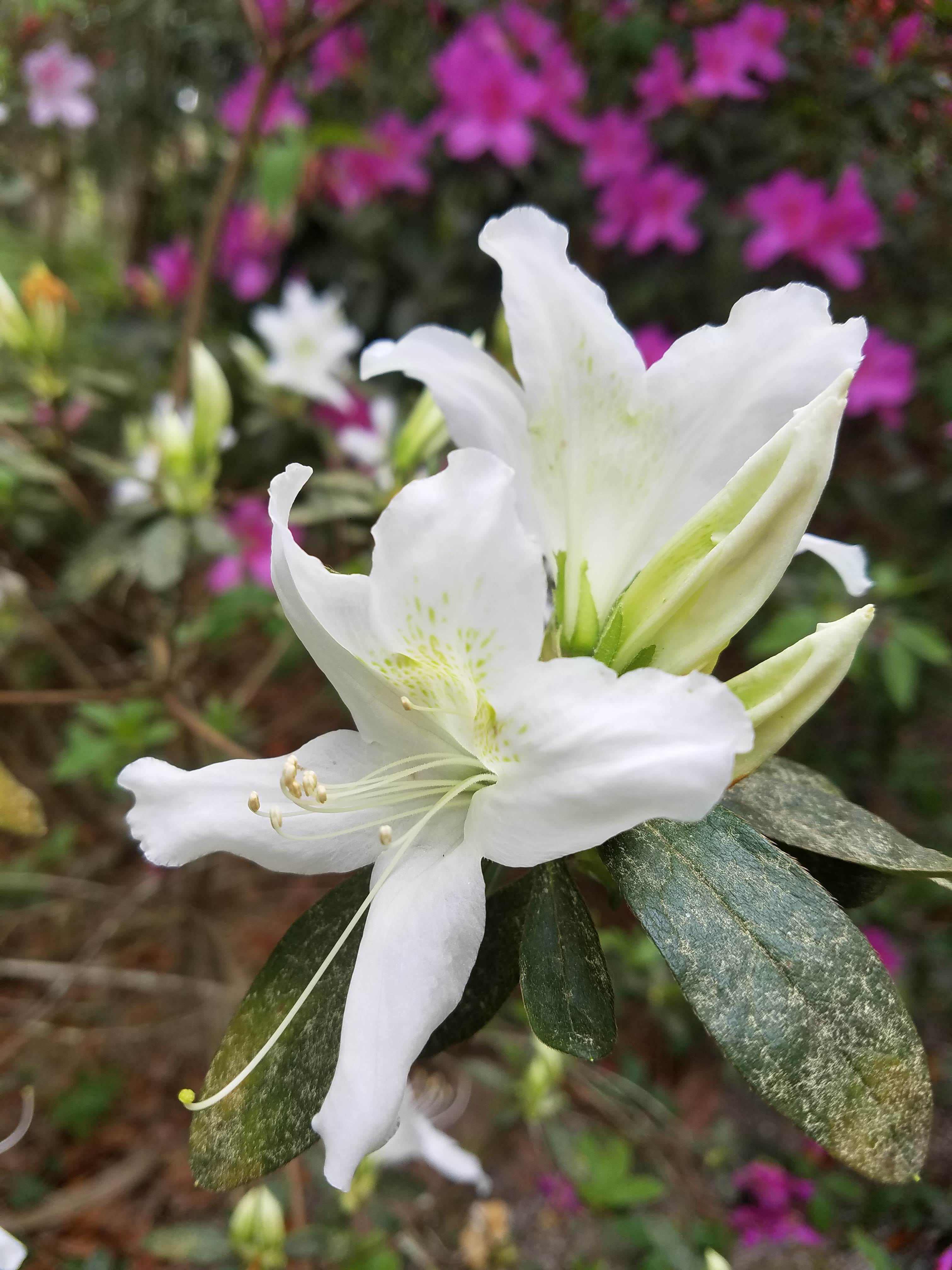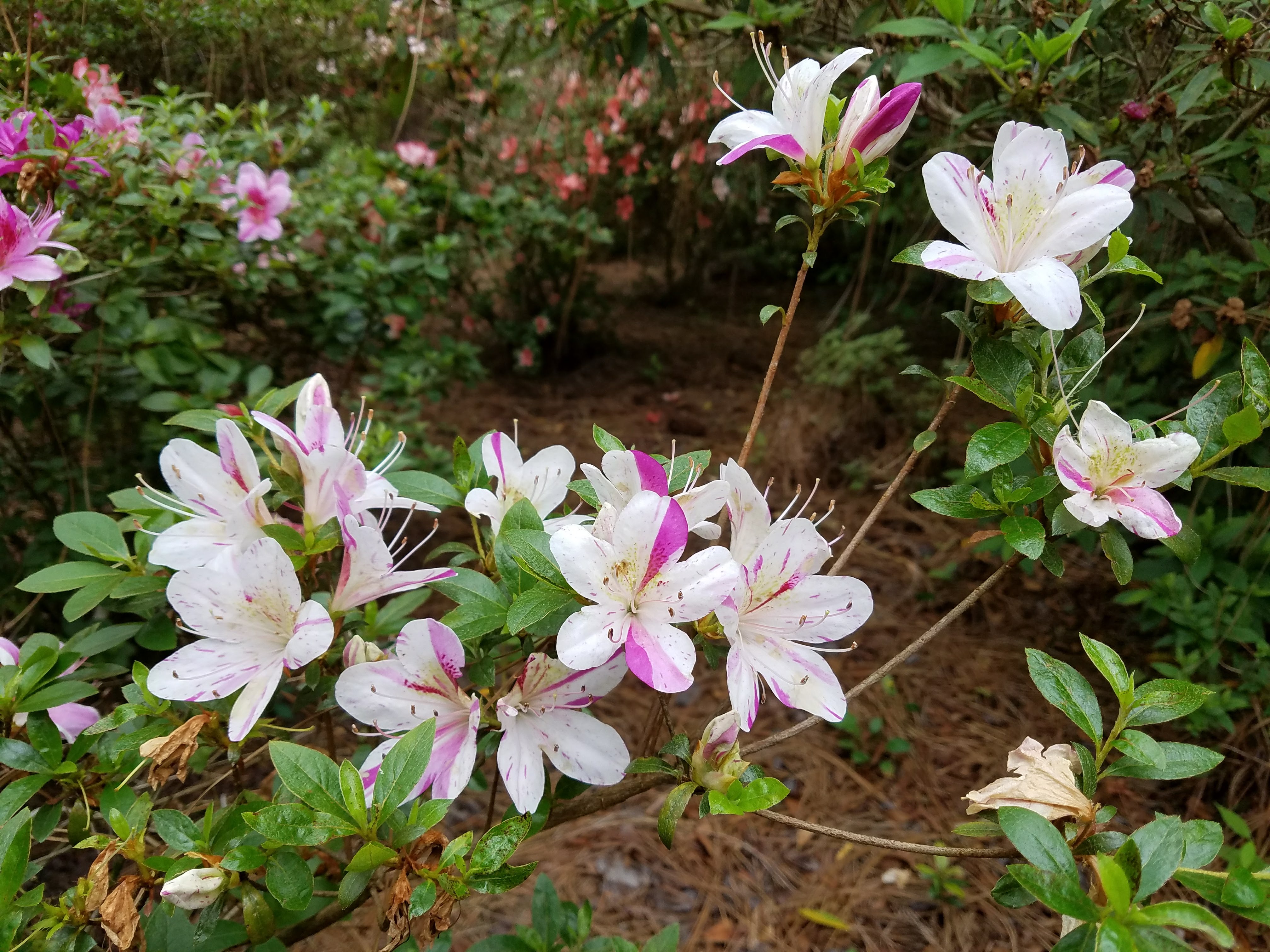Azaleas Demystified: When Do You Prune Azaleas?
go.ncsu.edu/readext?985344
en Español / em Português
El inglés es el idioma de control de esta página. En la medida en que haya algún conflicto entre la traducción al inglés y la traducción, el inglés prevalece.
Al hacer clic en el enlace de traducción se activa un servicio de traducción gratuito para convertir la página al español. Al igual que con cualquier traducción por Internet, la conversión no es sensible al contexto y puede que no traduzca el texto en su significado original. NC State Extension no garantiza la exactitud del texto traducido. Por favor, tenga en cuenta que algunas aplicaciones y/o servicios pueden no funcionar como se espera cuando se traducen.
Português
Inglês é o idioma de controle desta página. Na medida que haja algum conflito entre o texto original em Inglês e a tradução, o Inglês prevalece.
Ao clicar no link de tradução, um serviço gratuito de tradução será ativado para converter a página para o Português. Como em qualquer tradução pela internet, a conversão não é sensivel ao contexto e pode não ocorrer a tradução para o significado orginal. O serviço de Extensão da Carolina do Norte (NC State Extension) não garante a exatidão do texto traduzido. Por favor, observe que algumas funções ou serviços podem não funcionar como esperado após a tradução.
English
English is the controlling language of this page. To the extent there is any conflict between the English text and the translation, English controls.
Clicking on the translation link activates a free translation service to convert the page to Spanish. As with any Internet translation, the conversion is not context-sensitive and may not translate the text to its original meaning. NC State Extension does not guarantee the accuracy of the translated text. Please note that some applications and/or services may not function as expected when translated.
Collapse ▲Winter is the time to observe the bones of your garden, and reflect on how the previous year went. Looking back at the questions I received in the previous year, I noticed an uptick in interest in pruning evergreen azaleas. Unfortunately, this interest usually came at the most inconvenient time! Let’s get ahead of 2024 and learn how to not nip your azaleas in the bud.
DO NOT Prune Your Azaleas in the Winter
There is a lot of information about how pruning in the winter can be beneficial to plants, and this is mostly true. Except in the case of plants that bloom in the winter or spring on old wood, like evergreen azaleas! Evergreen azaleas set their buds in the late summer/early fall; so if you sheer your shrubs in the winter to shape them, you will shave off all of your spring buds. I have seen many an evergreen azalea be pruned back year after year, and maybe a few flowers will make it, but they never reach their full horticultural value.
DO Prune Your Evergreen Azaleas AFTER They Flower (Whenever that is!)
Once evergreen azaleas are done flowering, you can shear, shape, tip prune or cut

White Azalea – Photo by Amanda Wilkins
them to the ground. They will be back! I say “after flowering” because some azaleas will be flowering in February and some into June!
Evergreen azaleas will put out one to two flushes of growth a year: the first one being right after that spring flowering and the second in the mid-summer. The post-flowering time is the best time to cut the plants back really hard, if they have gotten too big for the spot they are in. Evergreen azaleas are incredibly resilient and will send out a flush of growth after a harsh pruning; and can flower the next year just fine! You can cut off those weird whip shoots and “Alfalfa hairs” (think The Little Rascals character!) without sacrificing flowers as late as mid-summer. About early August should be your cut-off for sheering, if you prefer that meatball-look.
The exception to the late summer rule are Encore(R) azaleas and other cultivars that flower in the late summer/fall. You could potentially be pruning off flower buds if you want too long to prune after the spring flush.
When It is Okay to Prune Anytime!
There are always exceptions to every rule, right? In the case of pruning evergreen azaleas, you can always prune off dead, diseased and dying branches. Make sure you burn or remove dead/diseased/dying materials from your property, and you

Satsuki Azalea with long shoots – Photo by Amanda Wilkins
spray your tools with alcohol to prevent the spread of disease. There are a few wilt diseases that azaleas can get that can cause a whole branch to suddenly wilt and die. Make sure to always be looking out for these and prune them out as soon as you see them! They can infect the whole shrub!
The other instance is when a plant’s growth is in your way! Do not suffer through growth that impedes your ability to walk by it, park your car, or access an area. Pruning for access is always the gardener’s purview. Just avoid making these types of pruning cuts during harsh, cold, freezing weather, as it can harm the evergreen azaleas.
Pruning Deciduous Azaleas
This article is mainly about evergreen azaleas, but it is worth mentioning our native deciduous, or honeysuckle, azaleas, as well. These beautiful upright vase shrubs lose their leaves in the winter and become skeletal sticks with charming buds atop each stem. Thankfully, their pruning is the same as evergreen azaleas, as they also flower in the spring and prefer to be pruned post-flowering. They are also incredibly resilient to hard prunings, post-flowering.
Proper Pruning Planning Prevents Poor Plant Performance
Take charge of your plants’ appropriate pruning schedule and maximize your plants’ health and flowering potential. Instead of wondering what to do too late in the year after your evergreen azalea has taken on that hair-brained look, you can expertly prune or shear your evergreen azaleas once they stop flowering and restore the size and look you need in your landscape. Here’s to happy flowering in 2024 and 2025!
Amanda Wilkins is the Horticulture Agent for North Carolina Cooperative Extension in Lee County.
Resources:




